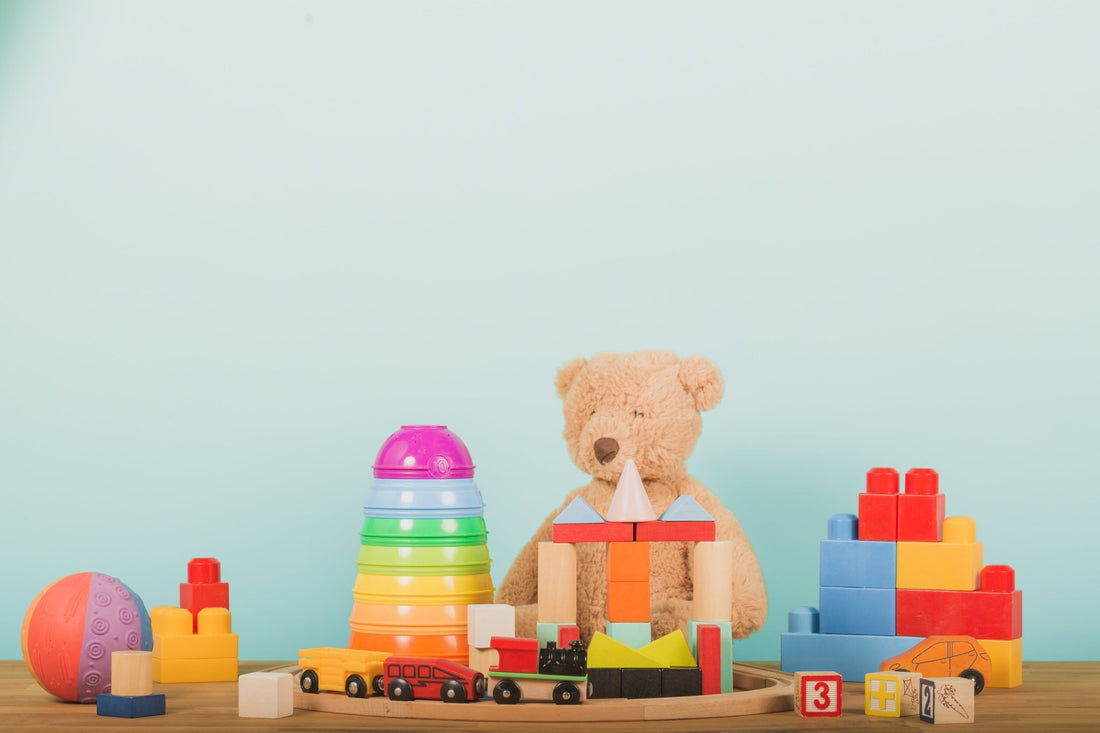
Montessori Activities for Babies (pt 1)
Share
Curious about what activities are good for your baby?
The Montessori education, founded by Maria Montessori in the early 20s, Maria Montessori observed that the best way children learned things and developed skills was by letting the child lead his/her own way and interact freely with the environment with little to no involvement from the adult. The idea of Montessori learning is that every baby or child is seen as unique, with unique ways of learning, unique interests and unique timeline for learning. Montessori method recognizes this by providing an environment that is tailored to meet the individual needs, interests, and developmental stages of each baby and child and by prioritizing individual development and needs of each child.
Montessori education also emphasizes the idea of keeping things and activities simple to avoid overstimulating the baby or child. The idea of less is more is significantly true for Montessori as it is important to avoid cluster or too many stimuli that can distract or overwhelm our child. The Montessori approach can be started at home (to learn how to start Montessori at home, read this blog) at an early age and practiced all the way through childhood.
In this post, we are going to discuss different type of Montessori activities that parents can implement in their babies. We are going to break down the activities from 0 to 3 months, 3 to 6 months and 6 to 9 months (9 to 12 months and 12 + will be in our part 2 of this article).

When choosing activities for your baby, it is important to look at the current stage they are in, what they are interested in or what do they show to be interested in. You can choose natural materials, such as wood, fabric, stainless steel, rubber/silicone. Make sure to limit the number of activities and have few at a time (no more than five or six at a time). Language activities are very important during the baby stage as they are starting to learn sounds, tones, and pitch as well as communicating with another human being.
0 – 3 Months: You don’t need a lot of materials during this stage. You need to communicate with your baby a lot. When they make sounds, respond to them with sentences, read books to them, sing to them, make eye contact, expressions and baby language. Try to do the following:
- Always communicate with your baby every time you are with them, holding them, bathing them, changing them, feeding them.
- Tell them what you are going to do and how.
- This is a good time to check the baby’s hearing. Make sounds, call out the baby’s name, clap to see the baby’s reaction.
- Introduce the baby with light baby rattles for them to touch and attempt to grab (do not let go of the rattle, always support it with your hand as babies cannot fully grab yet and they will drop it on their face.
3 – 6 Months: At this stage they start to pay more attention to their surroundings, and they can see better and farther. For example, they start to pay attention to our face, expressions, mouth movement when speaking.
- Try to speak slowly to the baby, so he/she has time absorb and learn lips and mouth movement along with sound.
- Continue talking to the baby and respond to them when they make sounds.
- It is very important to talk to the baby normally and do not do “baby talk” or sounds like “goo goo ga ga”
- Start introducing the baby to sign language. Did you know that this is the first language that baby use before they can begin to talk.
- Wooden rattles with different textures, colors, shapes to serve as grasping materials for the baby’s hands.

6 to 9 Months: This is the stage the baby starts to understand words and respond to simple commands, such as clap your hands, open your mouth, say bye-bye.
- Continue talking to the baby and communicating with everything you do. Start by using the correct name of things so that the baby starts to learn and assimilate words with its meanings or things.
- Sing to your baby as it helps the baby learn and differentiate tone, sounds, pitch, volume.
- Give the baby room in an area where he/she can start moving freely.
- Wooden instruments are great for texture and discovery of sounds.
- Wooden rattles are great for grasping, movement sound development.

To sum up, we can start introducing Montessori activities to our babies from a very early age. It is important to start with simple activities such as language activities that involve communication and creation of sounds. This is the moment that we can also use to check baby’s hearing and how they respond to sounds. We can implement activities based on the age stage that they are in and what they appear to be interested in. We discussed different Montessori activities to implement at different stages such as 0 to 3 months, 3 to 6 and 6 to 9; however, the main purpose was communication and the use of sounds and expressions to familiarize the baby with others.
Don’t forget to stay tuned for part 2 of this article.
Register to our newsletter and don’t forget to follow us on Instagram, Facebook and TikTok.
Supplementary Readings:
The Montessori Baby: A parent’s guide to nurturing your baby by Simone Davies and Junnifa Uzodike.
The Montessori Toddler: A parent’s guide to raising a curious and responsible toddler By Simone Davies.

